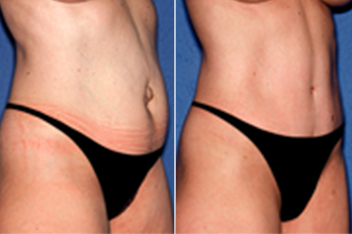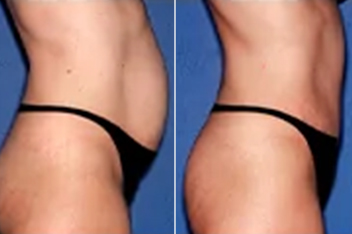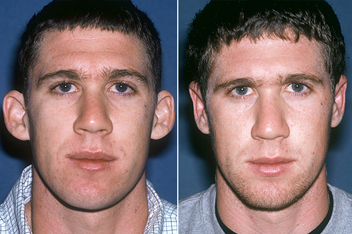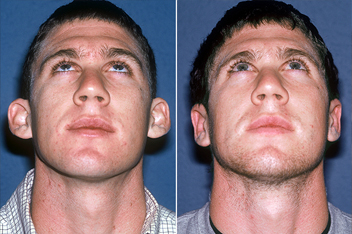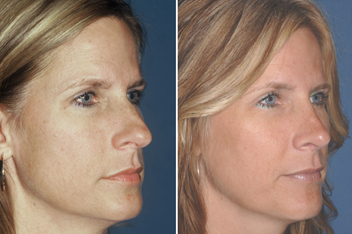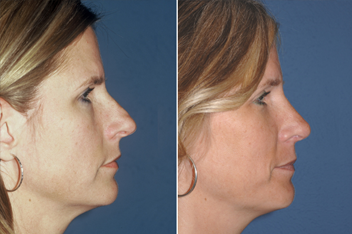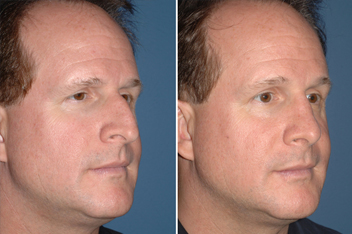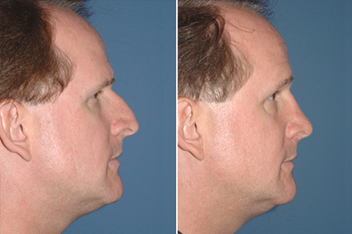MicroLipoSculpt™ Liposuction
Conveniently located to serve the areas of Dallas, TX
Timestamps
- 00:00 – LipoSculpture Introduction
- 04:02 – Candidates & Areas
- 07:40 – Differences
- 24:09 – Pre & Post-Op
- 27:05 – Results
- 30:43 – Key Points – MicroLipoSculpt™
Contents
- 1 LipoSculpture/Liposuction: Introduction
- 2 Liposuction Basics: How Does Liposuction Work?
- 3 Liposuction: Concepts – What Are the Most Important Liposuction Concepts?
- 4 Liposuction: Who Are the Best Liposuction Candidates?
- 5 Liposuction: How to Get the Best Liposuction Results
- 6 Liposuction: Which Are the Best Areas to Treat with Liposuction?
- 7 Traditional Liposuction vs MicroLipoSculpt™ Liposuction
- 8 Circumferential MicroLiposuction: Benefits – Why is MicroLipo Best?
- 9 Circumferential MicroLiposuction: Subdivide Areas for Best Liposuction Results
- 10 Liposuction: Tumescent Fluid – Inject Fluid Before Sucking Fat “Super Wet”
- 11 Liposuction: Avoiding Lidocaine – Why is Liposuction Safer Without Lidocaine?
- 12 MicroLipoSculpt™ Liposuction: Differences / Incisions
- 13 MicroLiposuction: Gynecomastia (Male Breast Reduction) Treatment with Liposuction
- 14 Circumferential MicroLiposuction: Why Circumferential Liposuction?
- 15 MicroLipoSculpt™: Cannulas (Instruments) – Smaller Cannulas = Smoother Contours
- 16 Circumferential MicroLiposuction: 2 Key Concepts for Best Liposuction Results
- 17 Liposuction: Pre-op
- 18 Liposuction: Surgery & Post-op
- 19 Circumferential MicroLiposuction: How to Get the Best Liposuction Results
LipoSculpture/Liposuction: Introduction
Hi, I’m Dr. White. Thank you for coming today to learn a little bit more about liposuction. I think liposuction is one of the most oversimplified … and I think misunderstood plastic surgery procedures.
It really is an artistic procedure. It’s designed for body contouring … rather than weight loss. Although you do lose weight with liposuction typically, the goal is really to reshape the body. And I think it really should be lipo-sculpture rather than simply liposuction.
Liposuction Basics: How Does Liposuction Work?
Liposuction Video – USA Plastic Surgery – Dallas – Fort Worth, Texas TX – Dr. Steven J White MD
And so, I’d like to talk to you today about what liposuction is, what it’s designed to do, and to teach you a bit more about it. The concept is to insert a cannula, which is a hollow tube, hollow metal instrument (like a cannoli, and that’s where the name cannula is derived from) that’s placed through small incisions in-and-out through the tissues in order to suction out the fat.
So, the first thing you do is you make a small incision and then you put in a fluid, a “tumescent” fluid that squeezes the blood vessels and that minimizes the bleeding. And at that point, you go in, you make multiple passes to suction out the fat, and then you sew up the incisions and then you use a compression garment afterwards. So that’s kind of the basic concepts.
The liposuction is designed to go after the deeper fat … not at the very surface (like cellulite). Cellulite may be better, may be same, may be worse. It’s not really designed to address the cellulite … but rather the deeper tissues.
So, if we consider a cross section of the body, say the thigh, and let’s say this is the bone surrounded by the muscle and this is the skin, the fat is up underneath the skin. And this is the level of fat at which we’re suctioning. Now, you don’t want to get rid of all of the fat obviously, or you’re going to have loose, wrinkled skin. So, there’s really an artistic judgment involved with liposuction regarding how much fat to take out.
And the fat that we’re working at is this deeper level. We don’t want to work it right at the surface level, because that’s where the cellulite is and that will definitely cause scarring if you’re working at that level. There are little attachments to the skin. And what happens with cellulite is those little areas of fat pockets superficially sometimes will get a little bit bigger. And when that happens, we’ll see little depressions in the skin. And let me draw that for you a little bit bigger so that you can see what I mean.
If we consider this is the surface of the skin … and this is just below the surface, we have these little fibrous connections, which we call fibrous septa. And “septa” means divide. And so, there’s fat within here … in these superficial pockets, and if the fat in those superficial pockets increases, the body still has these connections underneath … and that’s what causes the depressions there.
So, cellulite sometimes is improved by liposuction because the overall skin shrinks, and as it does, and the patient loses weight and as that happens, the fat everywhere may tend to decrease, including the fat in this area.
Liposuction: Concepts – What Are the Most Important Liposuction Concepts?
A few of the concepts that I’ll share with you today, one of which is … the skin only shrinks in the area for which we undermine … so that the larger the area, the greater the skin shrinkage. The other is the smaller the cannula … the smoother the contour. And that’s what has led me to develop my technique of Circumferential Micro-Lipo. In other words, we want to … go further around in order to incorporate more skin … and get more skin shrinkage … with a smaller cannula, …with the benefits of an easier recovery because of … the precision surgery and less tissue trauma. Also, I’m able to have a more controlled removal of the fat in order to have a … more symmetric outcome.
Liposuction: Who Are the Best Liposuction Candidates?
Liposuction Video – USA Plastic Surgery – Dallas – Fort Worth, Texas TX – Dr. Steven J White MD
It’s been said that you can never be too thin … or too rich. Pretty much anybody would often say, hey, I’d like to have some liposuction. That’s the reason that liposuction is the number one cosmetic procedure in America today, and both for men and women, because it really can make a difference. Again, the goal is to reshape the body for body contouring and sculpting … rather than weight loss, per se, although patients often do lose a fair amount of weight after the fat removal.
So, the best candidates are men or women almost any age, but the idea is someone who’s healthy, who has good skin turgor, in other words, the elasticity of the skin. The ideal person would be someone who’s very young, say a teenager, versus someone who’s very old, like 80, 90 years old, because as the skin loses some of the elasticity, then it doesn’t tend to bounce back after you remove the fat. It may tend to be loose and that’s something that you would want to avoid.
Although a teenager would probably most benefit from diet and exercise as opposed to liposuction. But the idea is a healthy person with good skin turgor, who’s at a stable weight. And you need not be in an ideal body weight, but really kind of a plateau as to where your body tends to be. If you want to lose weight before surgery, fine. But the goal is not to eat whatever you want before you have surgery because, oh, well, Dr. White will suck it out later.
Liposuction: How to Get the Best Liposuction Results
But you really do want to have a commitment to be serious about it, and you want to have realistic expectations, and also be committed to getting the best result. And that takes some effort on your behalf in order to maintain the diet and exercise after surgery, as well as to be compliant with the compression garments.
Because when I suction out the fat, the body is now smaller, but the skin is the same size. And the way that we can get the skin to shrink, it’ll shrink on its own … but if you want to enhance that, you want to hold that skin in place. And the more compression that you have as time goes on (as you begin to shrink, we will put you in smaller or smaller garments) and that will enable you to have greater skin shrinkage and a better body contour, which is the goal after all.
Liposuction: Which Are the Best Areas to Treat with Liposuction?
Liposuction Video – USA Plastic Surgery – Dallas – Fort Worth, Texas TX – Dr. Steven J White MD
So, what are the best areas for liposuction? Well, it’s a bit different between men and women. In men, they tend to put on weight either in the neck, the chest, or the torso, essentially from the belt up. Now in women, it tends to be in those same areas, but also in the arms, the back of the arms, and most commonly in the thighs and in the knees, and also in the hips.
So, it’s a bit different. But for women typically, it’s from about here to here, from under the arms down to below the knees. And for men, it’s from the waist up. And all of those areas tend to do very well. The amount of fat that’s removed in the neck and in the submental region below the chin, often a small amount of removal can actually make a big difference. The same thing with the arms. The male breast, the gynecomastia is exceptionally well treated with liposuction. I do quite a bit of that. And men sometimes will also want the love handles and the upper and lower abdomen treated. Most commonly `for women it is the abdomen, but also the hips and flanks on the side. Sometimes the bra fat area, as well as the inner and outer thighs, the top of the thighs, the back of the thighs, and usually the inside of the knees as well. All of those areas tend to respond very well to liposuction, provided, of course, that the patient is compliant with diet and exercise and is committed to wearing the compression garments afterwards, in order to get the best results.
Traditional Liposuction vs MicroLipoSculpt™ Liposuction
Understanding the differences between traditional liposuction and the Circumferential Micro-Lipo that I prefer is somewhat akin to what Teddy Roosevelt once famously said, and that is “Speak softly and carry a big stick”. Well, my approach is to “Yell loudly with a small straw.” In other words, if you go to 7/11 and you get a Big Gulp and you get a large straw, you can suck a lot in a very short period of time. On the other hand, if you’re sucking through a coffee stirrer, then that’s going to take a lot more effort. Typically, liposuction is done with a larger cannula, with often more incisions, which are not as well hidden, and it’s done more quickly. And so that often leads to the most common problems with liposuction, which is … patient dissatisfaction because of asymmetries and also because of contour irregularities.
And so that’s why I’ve developed the Circumferential Micro-Lipo technique that allows me to do a greater amount of fat removal with a smaller cannula, such that I can have a smoother contour with a quicker, easier recovery.
First, what I’d like to do is draw a diagram as a cross section. And with a larger cannula, this is the tunnel that’s left behind where the fat has been removed under the skin. Now, with a cross section here, a smaller cannula removes less fat with every pass, which means that there are smaller tunnels underneath the skin. If you suck out the fat with a large cannula, it’s easy on the surgeon because you can be finished with the surgery in a hurry. The problem for the patient, however, is when you remove this large amount with each pass, there’s fewer of these, but they tend to be more uneven and you tend to have a concern with the “lumpy bumpy,” which is the number one problem with liposuction after surgery is “lumpy bumpy” or contour irregularities.
What I have discovered is that you can typically avoid that by using a … much smaller cannula, such that there may be more little tunnels, but they’re… more evenly dispersed, and that allows us to have a … smoother contour. So that’s the number one reason why I use a smaller cannula. And the cannula that I use is typically half the size of what most surgeons use.
Now, the added benefit is the smaller cannula has less tissue trauma. Again, it’s precision surgery. As that cannula goes in and out, a smaller one is going to slide in and out, which means that there’s less injury to the blood vessels, so that means there’s less bruising, less bleeding, less injury to the nerves. That means there’s less chance of numbness and less pain. So, the smaller cannula may take a little longer during surgery, but the benefit to the patient is that it tends to leave a smoother contour with a much better result and a faster, easier recovery. And I think that’s worth the added time to get a better result.
Circumferential MicroLiposuction: Benefits – Why is MicroLipo Best?
Liposuction Video – USA Plastic Surgery – Dallas – Fort Worth, Texas TX – Dr. Steven J White MD
In most cases, if they’re treating the torso, the patient is taken to the operating room, the markings are made before surgery, the patient lies on their back, they put them to sleep, and if they’re going to do liposuction in the back, the first thing they’ll do is they’ll flip the patient over then they’ll do lipo of the back. And very commonly they’ll put incisions along the back. I like to call that “snake eyes,” because when you see them at a country club walking by in a bikini, you can go, “I know what she had done,” … because it’s the only thing that causes those two little marks up near the bra and also down at the bottom. And I think that’s totally unnecessary. If you hide the incisions very carefully, and I prefer a different technique, a Range-of-Motion Liposuction, it enables me to be able to do a more aggressive liposuction through fewer, better placed incisions in order to avoid that.
The Range-of-Motion Liposuction that I prefer is the patient is brought to the operating room, they’re lying on their back and we do a circumferential preparation. In other words, they’re completely sterile all the way around because there’s sterile sheets on the bed. And in that setting, I can rotate the patient and turn them on their side (on one side or the other) and be able to see how the skin re-drapes while I’m doing their suctioning. And that enables me to see in real time how the skin is reacting to the liposuction. That’s most important in doing the liposuction of the thighs, because while the patient is lying there, I can rotate the thigh from side to side and really look and see how the skin responds.
Circumferential MicroLiposuction: Subdivide Areas for Best Liposuction Results
I think that’s a very important distinction and it makes a big difference in the results. The other thing is the simple concept of “divide and conquer,” and to be careful and pay attention to the details. When I do liposuction of the thighs, I divide it into four areas: the top of the thigh, the inner thigh, the outer thigh, and the back of the thigh. In each of those areas, I will subdivide. The outer thigh, I’ll divide into four areas. The top of the thigh, I’ll divide it into the proximal or distal (the near and the far). The same thing with the inner thigh, I divide that into four areas. And that enables me to be more careful about how I place the tumescent fluid first … and also suction the fat afterwards. So, this is an important consideration, because with tumescent super-wet technique, we place the fluid to squeeze the blood vessels and then suction the fat.
And one has to be careful in placing the fluid that you don’t, for instance, place the same amount of fluid in one thigh as you do in the other, but perhaps put twice as much as the inner thigh on one side as you did on the other. So, when I inject, I do it in a very careful fashion where I place it … by area … in order that I can have a comparable amount on either side when I place it. Otherwise, by putting in the fluid to squeeze the blood vessels to minimize your bleeding, you can actually cause distortion of the tissues, and that can then lead to asymmetry afterwards. So that’s one of the other areas that I think it’s important is to pay attention to those details in doing the liposuction, in essence, lipo-sculpture. Now, my approach to liposuction is different in many ways, one of which is the fluid that I place in order to squeeze the blood vessels.
Liposuction: Tumescent Fluid – Inject Fluid Before Sucking Fat “Super Wet”
Early on, three times as much fluid was placed in order to really make the tissues tight compared to the fat that was removed, and they discovered the patients had a fair amount of problems with fluid overload. Now we do a super-wet form of tumescent liposuction. I think most surgeons would do this. You put in roughly what you take out, or somewhat more, but not three times as much.
Liposuction: Avoiding Lidocaine – Why is Liposuction Safer Without Lidocaine?
Liposuction Video – USA Plastic Surgery – Dallas – Fort Worth, Texas TX – Dr. Steven J White MD
Now, the concern is patient safety. What is the fluid that you’re putting into the body in order to squeeze those blood vessels? And what I like to use is different than what most people use. Traditionally, the way that we’re taught is you place saline, a bottle of saline, and for every bottle of saline that you put in, you take a bottle of lidocaine with EPI. The red top means it has adrenaline (EPI or epinephrine) in it. And this is what we use as a numbing medicine, and if a patient comes into the ER and has a laceration, this is what we use to inject so that it numbs it up. We let it sit for about 8 to 10 minutes to let it squeeze the blood vessels so that you have very little bleeding when you’re suturing.
Now, the reason they package this in this size bottle is they assume that most people weigh about 150 pounds, and anything more than that would be considered toxic for the lidocaine. Lidocaine toxicity can lead to problems, including heart attacks and arrhythmias. And if you look at the problems, the serious problems with liposuction, they can be patients who’ve had deaths related to heart attacks and arrhythmias typically due to lidocaine toxicity. And the reason is, because if they take out four or five liters of fat, they put in four or five bottles of this (normal saline) and four or five bottles of this (lidocaine with epi or epinephrine) … and suddenly they’ve put in way too much lidocaine.
Now, I prefer to do liposuction when you’re asleep so that you don’t feel anything, and this allows me to do a more comprehensive removal of the fat and more comprehensive sculpting. Now, my question is how much numbing medicine do you need when you’re asleep and you don’t feel anything? Well, the answer is none. So, I don’t use lidocaine.
MicroLipoSculpt™ Liposuction: Differences / Incisions
Lidocaine is where the problems come from. So, I use adrenaline by itself … and place one small ampule of adrenaline (or epinephrine) per litter of saline. So, it’s all about patient safety and natural results. So, the fluid that I use is different. The incisions that I use are different. I use a very small cannula. And because I use a smaller cannula, I can use a smaller incision. Some surgeons do the “no-stitch” technique, and they’re even proud of it. They go, “Oh, I do the no-stitch” liposuction. Oh, my goodness, that sounds great. Well, in reality, that means … they just didn’t slow down long enough … to sew you up afterwards.
And if you don’t sew up the incisions … guess what? All the fluid we put in … tends to leak out. And I’ve heard many stories of patients coming in and saying, “Well, I had lipo last time and they tell me you’re the one who can fix it. But I’m really worried about it, because it just ruined my bed and my sheets because it leaked out all over the place.” And again, that’s just crazy. What I do is I sew you up in multiple layers, just like any incision, in order to get the best possible scar. And I spent a great deal of effort trying … to minimize which scars I use … and where I place them so that they’re best hidden. Typically, under the swimsuit, like a string bikini, or along the boxers for a guy, and up underneath the breast fold (women), and also in a guy around the areola … like when I do the gynecomastia treatment for men, the incision is essentially imperceptible.
MicroLiposuction: Gynecomastia (Male Breast Reduction) Treatment with Liposuction
Liposuction Video – USA Plastic Surgery – Dallas – Fort Worth, Texas TX – Dr. Steven J White MD
And when I do the thighs, we put it along the string bikini, but also one on the outer thighs and then one hidden behind the knee. There are two basic concepts that are very important with liposuction. Number one, the skin only shrinks in the area suctioned. Now, that may seem intuitively obvious, but it’s actually a very important concept. This is something I really picked up from men in doing gynecomastia. If this is the chest and they have some enlargement of the breast, what is typically done is an incision is made here, and this area right here is suctioned and the cannula goes in-and-out like that. And while that can make a difference, it tends to create an extra scar over here, which I don’t like. So, I don’t use that technique. It also only suctions this area, and so there’s a limited amount of skin shrinkage.
And if this skin is hanging here beforehand, it’s not going to shrink very much because it can only shrink from here to here. And so, what I have done in my technique with gynecomastia over time is I have expanded that. If this is the fold, this is the nipple, rather than just lipo this area right here, I have discovered that if I will lipo over this entire area and this will then enable me to have a lot more skin shrinkage. So, I will go from right here, and I’ve always divided into multiple areas. And from this area I can go in-and-out, in-and-out, in-and-out, in-and-out, in-and-out, in-and-out, in-and-out, in-and-out, in-and-out, in-and-out, in-and-out, in-and-out, and in-and-out. And then over on the side, I do some additional lipo over here from that single incision.
And what I’ve discovered over time is that by going over a much broader surface area, if you consider the skin kind of like a tarp, if you will. If you lift up the tarp, and then set it back down and make it “sticky” underneath, in other words, as it tries to heal, then what’ll happen is the skin will now shrink from here all the way down to here, and from here to here, and you’ll get much more dramatic skin shrinkage. And I’ve had a number of men with what would be essentially a C cup breast that would tend to be perfectly flat afterwards. So, I think that’s a very important concept. Now, that’s what’s allowed me to evolve my treatment for gynecomastia, but it’s also very important for women, and it’s what led me to do my Circumferential Micro-Lipo.
Circumferential MicroLiposuction: Why Circumferential Liposuction?
For a woman, let’s say we’re doing the thigh, and this is the skin, and it’s a cross section through the thigh. We have the bone and then the muscle … the bone, the muscle, and the skin. And it’s the deep fat under the skin that we want to do the liposuction. Now, when women see themselves in the mirror, they often say, “It’s my inner thigh and outer thigh.” Now let’s say this is the inner thigh and this is the outer thigh. And they said, “That’s what bothers me. That’s where I see the bulge.” So, we’ll lipo the fat here, lipo the fat here. And when you lipo the fat, the skin will shrink along here and the skin will shrink along here. Unfortunately, nothing happens here or here, the top of the thigh or the backside of the thigh.
So, what I have discovered over time is that if I can go all the way around, essentially, we make the skin “sticky” all the way around … and we get much more skin shrinkage. So most commonly we’ll do a Circumferential Micro-Lipo. So, … it’s fewer, better hidden incisions … in a different tumescent fluid.
MicroLipoSculpt™: Cannulas (Instruments) – Smaller Cannulas = Smoother Contours
Liposuction Video – USA Plastic Surgery – Dallas – Fort Worth, Texas TX – Dr. Steven J White MD
Now I want to talk about the cannula design. The cannulas that I use are different, and that’s what enables me to use a smaller cannula. Most surgeons use a Mercedes tip cannula. And the Mercedes tip is much like the Mercedes emblem. That is to say that it looks like this in a way that there’s a hole here, there’s a hole here and there’s a hole here. So, there are three holes in the cannula, and there’re all at the same level of the cannula, such that if we look at the cannula from the side, there’s a hole here, there’s a hole here, and the other hole is on the backside about like this.
Now, if all three holes are at the same level, there has to be enough metal around each hole so that the cannula doesn’t break or doesn’t bend. And that’s the problem with the Mercedes design. You have to use a larger cannula to be able to efficiently remove any fat, because otherwise with a hole here, and a hole here and a hole here, it has to be a certain size, otherwise there’s not enough metal around here and the cannula will break. So that is why most surgeons will use a Mercedes tip because it’s the most popular design.
The cannulas that I use have a … totally different design … and they’re custom made for me. And the design that I have is there’s a hole here, there’s a hole here, and the other hole is back here. So, I can … suck more fat through a smaller straw, if you will, … through a smaller cannula. And that’s what enables me to have a more efficient liposuction. The cannulas that I use are typically half the size of what most surgeons will use.
I have a pupil gauge that will help you understand this. On the pupil gauge, it will show millimeters of diameter. Nine millimeters, eight millimeters, seven millimeters, six millimeters. The very first liposuction was done using a large cannula, which was actually 12 millimeters in diameter. Now, obviously they had a lot of bleeding, and so they subsequently realized that using a smaller cannula would work better. Most surgeons today use about a 4 or 5 millimeter cannula, and often a 4.5 mm.
The size that I use is 2.5mm, and sometimes 3mm. So, it’s half the size of what most people use. Now, yes, it does take me a bit longer to do the surgery because I have multiple passes but enables you to have a … smoother contour … with less chance of unevenness, … a better result, … and a quicker, easier recovery. And I think that it’s worth the added extra effort to do it the best way that it can be done the first time.
Circumferential MicroLiposuction: 2 Key Concepts for Best Liposuction Results
Liposuction Video – USA Plastic Surgery – Dallas – Fort Worth, Texas TX – Dr. Steven J White MD
Circumferential Micro-Lipo, my preferred approach to liposuction, involves … using smaller cannulas and … greater areas of skin involvement for liposuction. And this really is based upon the two concepts that I think are very important parts of liposuction. Number 1) the skin only shrinks … in the area under which it’s being suctioned. And Number 2) the smaller the cannula … the smoother the contour.
Liposuction: Pre-op
Now let’s talk about the pre and postoperative care for liposuction. Again, the goal is body contouring and not weight loss per se. And so it’s important to be at a stable weight, not necessarily an ideal body weight. The pre-op visit, we’ll typically see you several weeks in advance. We want to be sure not to do aspirin or Motrin for two weeks before and two weeks after. At the pre-op visit, plan on being here for a while. There’s a lot to learn. I have another video with a lot of information that I think is helpful about surgery in general, as well as a booklet, that we’ll give you an informational booklet all about liposuction.
Liposuction: Surgery & Post-op
Liposuction Video – USA Plastic Surgery – Dallas – Fort Worth, Texas TX – Dr. Steven J White MD
We’ll typically take quite a few before photos. And we want to make sure that we’ve answered any questions and we’ll go through the consent forms and such. That’s the preoperative visit.
The day of surgery, that’s kind of fun because I do the markings. And I do topographical markings, so I’ll show you the areas as to the areas of the fat we’re going to remove and where we’re going to concentrate. And I kind of draw all over you and I’ll show you the little marks where we’ll place the incisions. And so whoever your caregiver is, it’s not a bad idea to have them be there that day so that I can kind of show them as well. But they don’t need to take off that day, tell them to go to work. I don’t need them until we get done and I’ll call them whenever we get through. Afterwards, you’re going to be in a compression garment. And we will give you IV fluids, IV antibiotics. The anesthesiologists that I work with are outstanding. Our focus is always on patient safety.
We put a lot of attention on how to avoid problems. We’ve talked about how we don’t have lidocaine, so we’re not worried about lidocaine toxicity. But we want to avoid dehydration and we want to avoid blood clots. And we use foot pumps and leg pumps (things to pump the blood while you’re asleep) in order to focus on patient safety. But after surgery, we’ve given you fluids, not only IV fluids, but also the tumescent fluid into the body tissues so that we can do the lipo. So don’t stand on a scale after surgery, because if you do, chances are you’ll weigh more than you started because of those extra fluids, and then your body will go ahead and pee that out over a period of several days. So, we put you in a compression garment at first, and I would actually wait four or five days before you were to take it off and take a shower.
Because if not, what you may find is when you unzip that garment, you’re still pretty swollen. And the moment you release the compression, you’re going to swell. Well, you’re still kind of sore. So, if you start to swell quite a bit and you’re pretty sore, it might take some work to get back into that compression garment. So, my recommendation is wait about four days or so before you take it off and take a shower. And at that point, you’ve gone ahead and pee’d out all that extra fluid. And then as time goes on, we’ll shrink you into smaller and smaller garments in order to hold the skin more tightly against the body, in order to allow more skin compression and skin shrinkage to get an even better result over time.
Circumferential MicroLiposuction: How to Get the Best Liposuction Results
Liposuction Video – USA Plastic Surgery – Dallas – Fort Worth, Texas TX – Dr. Steven J White MD
Now let’s talk about the results from liposuction. I’m often asked, is it permanent? Are you going to gain the weight back? And the answer is that no … you shouldn’t, but it depends. It depends upon your compliance with diet and exercise. But the fat cells that are removed are gone forever. The concern, however, is the fat that’s left behind … each cell has an infinite capacity to get bigger. So, if we were to do liposuction in one area and you were to then gain some weight, then it would be more likely to gain weight in a different area because there’s a greater proportion or greater density of fat cells in the area that has not been yet treated with liposuction. So again, that’s unlikely, but that’s a possibility. So your result will depend upon what I do … but also what you do. So your result depends upon … how much fat was removed … how many areas were treated … and how big an area was treated.
And I said, the concept … the skin only shrinks in the area that was suctioned … the larger the area suctioned … the greater the skin shrinkage. And then the size of the cannula. The smaller the cannula … the smoother the contour. So, if you want to have a better result with more comprehensive suction, and you want to have a larger surface area of treatment and a smaller cannula. So that’s what I do.
What you do has to deal with your compliance with diet and exercise after surgery, as well as your willingness to wear the compression garments for a period of time. And as your body begins to shrink, we will put you in tighter and tighter compression garments. Now you don’t want to be too tight initially because it can be so tight that it compromises the blood supply. So, the garment at first is going to be a little bit loose to accommodate the additional swelling, and then as you begin to pee that fluid out and the body gets smaller, then we will put you in smaller and smaller garments.
And then finally, it depends upon how your body heals. And that’s the issue of the skin elasticity, or the doctor term for that is “skin turgor,” depending upon how much the skin will rebound and how much it will shrink over time. And I’ve been very impressed with how most patients will do, provided they’re able to maintain that compression afterwards in order to get the optimal result.
Now, liposuction is not a perfect science. And even though I’m very careful in order to do a proportionate side by side comparison for the amount of tumescent fluid I place in each area … and the amount of fat I remove, there’s still the possibility for postoperative asymmetries, as well as possible irregularities. In other words, there could be some over-resection, some under-resection. Very unlikely, but that’s a possibility dependent upon how your body heals over time.
So, there’s always a possible consideration for an additional procedure in order to do some additional liposuction, or possibly even to remove fat from one area and then to place it into another area to fill that out more. Very unlikely, but that’s a possibility.
So, it is a wonderful procedure and I think it’s worth the effort. I would rather spend more effort at the initial operation, focusing on how we can get the very best result for you. I hope you’ve enjoyed this video on liposuction. Hopefully it was helpful to understand better about the procedure, how it’s performed, how it’s typically performed, and then why I do it differently. The Circumferential Micro-Lipo, I have been very pleased with. And I look forward to meeting with you to better understand what your concerns are and what it is that you hope to achieve. Thank you very much.
MicroLipoSculpt™ Liposuction
Liposuction Video – USA Plastic Surgery – Dallas – Fort Worth, Texas TX – Dr. Steven J White MD
Key Points – MicroLipoSculpt™ Liposuction
Safety
- General anesthesia – asleep, no pain
- No Lidocaine – no Lidocaine toxicity
Cannulas
- Specially designed
- Custom made, various lengths
- 2.5 mm, rarely 3mm
Key Points – MicroLipoSculpt™ Liposuction
Incisions
- Smaller cannula, smaller incisions
- Smaller, fewer, well-hidden
- Sutured in layers with loupes
Precision
- Smaller cannula – less tissue trauma
- Less tissue trauma – less bruising, less pain
- Precisely measure fluid in, fat out, per area
Key Points – MicroLipoSculpt™ Liposuction
- Circumferential – Range of Motion – MicroLipoSculpt
- Better results – faster, easier recovery
- Larger area treated – more skin shrinkage
- Principle #2: Smaller cannula – smoother contour




